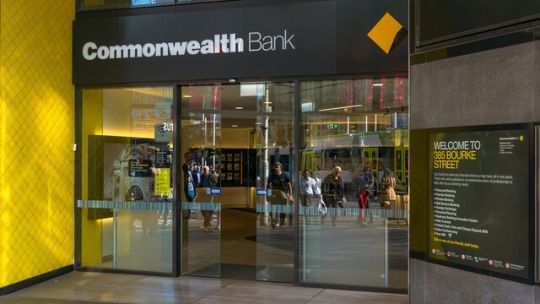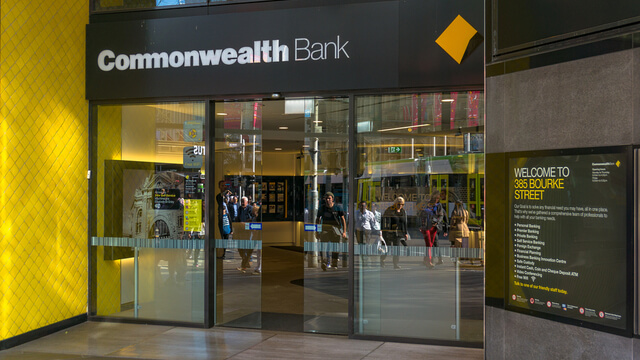CommBank hikes fixed home loan rates again – is this a sign of things to come for homebuyers?

CommBank last week increased fixed home loan rates by up to 0.50 percentage points for owner-occupiers and investors, marking the first one-year fixed rate increase from a major bank since 2018 and a signal that the interest rate cycle has started moving up.

The most significant rate rise was for CommBank’s four-year fixed rate home loan for owner-occupiers, paying principal and interest. This rate rose by 0.50 percentage points; according to Canstar research, this could represent a monthly repayment difference of $131 on a $500,000 mortgage, when compared to the previous rate.
For a $1 million mortgage, Canstar research found the repayment difference would be $263 when compared to the previous rate. The bank also raised its three-year fixed rate for owner-occupiers paying principal and interest by 0.40 percentage points, which is a monthly repayment difference of around $104 for a $500,000 mortgage and $208 for a $1 million mortgage. You can view CommBank’s current fixed and variable home loan rates by using the filters on Canstar’s comparison tables.
This was the second time in three weeks that CommBank increased fixed rates, having also cut some variable and shorter-term fixed rates in an interest rate shake-up last month.
Westpac, ANZ among other major banks to shake up rates
CommBank’s interest rate hike last week followed fixed rate increases from Westpac. The latest round of changes saw Westpac increasing its three-year fixed rate by 0.21 percentage points for owner-occupiers paying principal and interest and 0.20 percentage points for investors, while hiking its four and five-year fixed rates by 0.10 percentage points for both owner occupiers and investors.
This rate hike was the second time in a month that Westpac increased its fixed rates, following a string of longer-term fixed rate hikes from major banks including National Australia Bank (NAB) and CommBank in recent weeks.
In more recent developments, this week has also seen a shake up at ANZ, with the bank reducing rates across its Simplicity Plus range of variable rate home loan products for owner-occupiers and investors.
Lenders are responding to the Reserve Bank’s latest move
Last Tuesday, the Reserve Bank of Australia (RBA) board met and announced that the cash rate would be holding steady, although governor Philip Lowe indicated that we could well see the official interest raised earlier than the previously forecast date of 2024, potentially even in late 2023.
Canstar finance expert Steve Mickenbecker said that last week’s CBA rate hike, and Westpac’s before it, represented the major banks responding to this news.
“It hasn’t taken long for the banks to react to the Reserve Bank’s Tuesday announcement of the dumping of the 0.10% yield target for three-year government bonds. Westpac yesterday increased fixed home loan rates and today it is CommBank’s turn again, marking the second round of increases in three weeks,” he said.
“The Reserve Bank announcement didn’t tell the banks anything they didn’t know, but it lines up another duck in the case for an earlier return to increasing short-term rates.”
“The banks have been increasing home loan fixed rates for some months, starting at the five-year rate, then successively four, three and two. CommBank’s move piques interest as the first major bank since 2018 to lift its one-year rate, signalling how quickly the interest rate cycle is moving up.”
“With no risk of being locked into sub-standard margins, banks and their funders like variable rates when the outlook is up, but for borrowers the days of super-low variable rates look numbered. The horizon has come back from 2024 to 2023, and is moving closer.”
Mr Mickenbecker said that fixed rates are also becoming “less attractive” to borrowers, who now face the tough call of fixing their rate at a longer term for certainty, or taking out a low variable rate, on the understanding that these could well rise in years to come.
“Whatever decisions borrowers make, they shouldn’t be settling for the average variable rate of around 3.10%, as more than 195 loans on Canstar’s database come with a rate below 2%,” he said.
Fears of mortgage stress in years to come
The Australian property market is undeniably hot right now, with prices continually on the rise in most areas, but with Aussies paying more and more for homes, there is a potential danger that some of us could be pushed into mortgage stress in years to come.
Earlier this week, Mr Mickenbecker warned that if the official cash rate were to rise by 0.25 percentage points and lenders were to pass this on in full, a residential borrower with a $1 million mortgage on the average variable rate from our database of 3.09% would see their monthly loan repayments rise by $137 to reach $4,402.
He said that if the cash rate were to increase by a full percentage point, a borrower with a $1 million mortgage would see their monthly repayments rise by $561 to $4,826.
Interest rate moves in October 2021
The following is a snapshot of the interest rate movements we saw in October 2021, based on Canstar data.
Home loans:
- 18 lenders cut 45 variable rates by an average of 0.27 percentage points.
- 10 lenders cut 33 fixed rates (1 or 2 year) by an average of 0.16 percentage points.
- 27 lenders increased 343 fixed rates by an average of 0.17 percentage points.
- The average variable interest rate for owner-occupiers paying principal and interest is 3.10% and the lowest variable rate (excluding promotional rates) is 1.77% (comparison rate 1.86%) for 60% LVR, or 1.88% (comparison rate 1.97%) for 80% LVR.
- The average variable interest rate for investors paying principal and interest is 3.45%, while the lowest rate is 1.89% (comparison rate 2.28%) for 60% LVR or 1.95% (comparison rate 1.99%) for 80% LVR.
Savings accounts:
- 5 providers cut base interest rates by an average of 0.09 percentage points.
- 10 providers cut rates on bonus accounts (where a customer has to meet certain conditions each month to receive extra interest) by an average of 0.09 percentage points.
- 6 providers cut rates on promo accounts (where extra interest is only available for a limited time) by an average of 0.11 percentage points.
- Bonus savings accounts: The maximum rate is 1.35% and the average rate is 0.58%. A rate of 2.50% is available from: Westpac for 18- to 29-year-olds with a balance of up to $30,000, and BOQ for 14- to 24-year-olds with a balance of up to $10,000.
- Promotional savings accounts: The maximum rate is 1.35% (available for a four-month period) and the average rate is 0.56%.
- Ongoing savings accounts: The maximum rate is 0.90% and the average rate is 0.20%.
Term deposits:
- 15 providers cut 109 rates by an average of 0.07 percentage points.
- 8 providers increased 30 rates by an average of 0.18 percentage points.
- The average 1-year term deposit rate is 0.47% and the maximum rate is 0.99%.
The comparison rate for all home loans and loans secured against real property are based on secured credit of $150,000 and a term of 25 years.
^WARNING: This comparison rate is true only for the examples given and may not include all fees and charges. Different terms, fees or other loan amounts might result in a different comparison rate.
 Owner occupied
Owner occupied
 20% min deposit
20% min deposit
 Redraw facility
Redraw facility
 Owner occupied
Owner occupied
 30% min deposit
30% min deposit
 Redraw facility
Redraw facility
Canstar may earn a fee for referrals from its website tables, and from Sponsorship or Promotion of certain products. Fees payable by product providers for referrals and Sponsorship or Promotion may vary between providers, website position, and revenue model. Sponsorship or Promotion fees may be higher than referral fees. Sponsored or Promoted products are clearly disclosed as such on website pages. They may appear in a number of areas of the website such as in comparison tables, on hub pages and in articles. Sponsored or Promoted products may be displayed in a fixed position in a table, regardless of the product’s rating, price or other attributes. The table position of a Sponsored or Promoted product does not indicate any ranking or rating by Canstar. For more information please see How We Get Paid.
This article was reviewed by our Sub Editor Tom Letts and Deputy Editor Sean Callery before it was updated, as part of our fact-checking process.

Alasdair Duncan is Canstar's Deputy Finance Editor, specialising in home loans, property and lifestyle topics. He has written more than 500 articles for Canstar and his work is widely referenced by other publishers and media outlets, including Yahoo Finance, The New Daily, The Motley Fool and Sky News. He has featured as a guest author for property website homely.com.au.
In his more than 15 years working in the media, Alasdair has written for a broad range of publications. Before joining Canstar, he was a News Editor at Pedestrian.TV, part of Australia’s leading youth media group. His work has also appeared on ABC News, Junkee, Rolling Stone, Kotaku, the Sydney Star Observer and The Brag. He has a Bachelor of Laws (Honours) and a Bachelor of Arts with a major in Journalism from the University of Queensland.
When he is not writing about finance for Canstar, Alasdair can probably be found at the beach with his two dogs or listening to podcasts about pop music. You can follow Alasdair on LinkedIn.
The comparison rate for all home loans and loans secured against real property are based on secured credit of $150,000 and a term of 25 years.
^WARNING: This comparison rate is true only for the examples given and may not include all fees and charges. Different terms, fees or other loan amounts might result in a different comparison rate.
 Owner occupied
Owner occupied
 30% min deposit
30% min deposit
 Redraw facility
Redraw facility
Try our Home Loans comparison tool to instantly compare Canstar expert rated options.





